
Gallium nitride (GaN) semiconductors have long been a topic of research, but their practical applications are now taking off—literally.
By demonstrating the practical applications of GaN semiconductors in unmanned aerial vehicle (UAV) systems, Team GaN-FET BLDC Controller earned the Best Computer and Electrical Engineering Project Award at the Spring 2025 Capstone Design Expo on April 22.
The motor controller developed by the team displayed a significant increase in the efficiency of energy conversion from the battery to the motor, extending the flight time of UAV systems by about 61%, according to team led Lawrence Ro.
“Our project is really about showing the practical real-world use cases of gallium nitride, an up-and-coming semiconductor in the industry,” said Ro, a graduating electrical engineering major from Houston. “As a drone racer and pilot myself, I wanted to see if this new type of semiconductor could improve the performance of UAV systems.”

Team GaN-FET BLDC Controller (also pictured at the top of the article) won the Best ECE Award for their use of Gallium nitride (GaN) semiconductors in unmanned aerial vehicle systems.
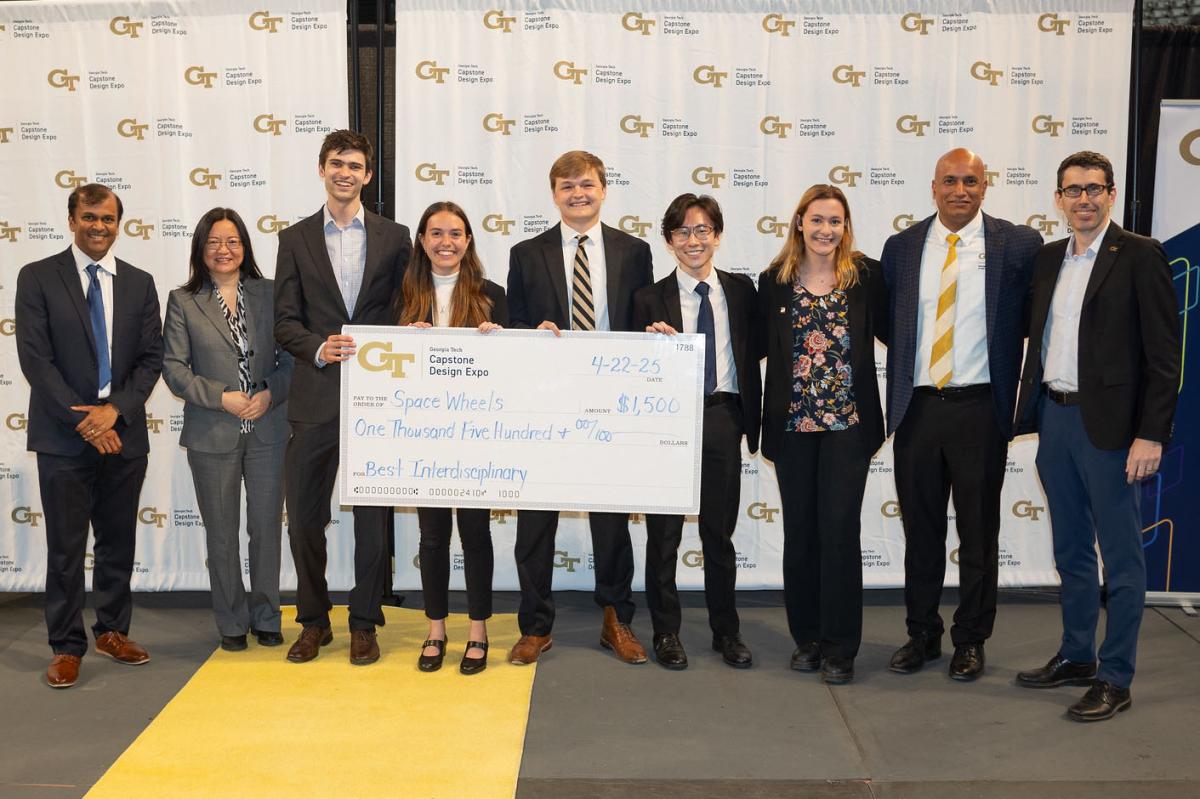
The top interdisciplinary team went to Team Space Wheels for developing a high-performance, low-cost CubeSat reaction wheel. The team is comprised of computer, electrical, and mechanical engineering majors.
GaN-FETs, or Gallium Nitride Field-Effect Transistors, are advanced electronic switches that offer several advantages over traditional MOSFETs, or Metal-Oxide-Semiconductor Field-Effect Transistors.
“GaN has so much potential because it can handle higher voltages and switch faster, which makes energy conversion much more efficient,” explained Ro, who worked on the project with Justin Barker (EE), Noah Kim (EE), Ted Paek (CmpE), and Asiauana Spikes (EE).
The team, advised by Professor Xiaoli Ma, developed a brushless direct current (BLDC) motor controller for UAV systems to showcase these benefits. The market has not yet widely adopted GaN-FET technology, so the project serves as a proof of concept for future development.
While the Best ECE Project winner targeted improvements in UAV systems through advanced semiconductors, another winning team explored space technology.
Team Space Wheels, largely made up of ECE students, secured the Best Interdisciplinary Project Award.
The project aims to develop a precise reaction wheel at an affordable cost to integrate within a 1U CubeSat, a small satellite with standardized dimensions.
The team, comprised of computer, electrical, and mechanical engineers, includes Fahd Aly (CmpE), Taylor Frankum, (EE), Susannah Gordon (EE), James Shin (EE), Daniel Vail (EE), and Emily Winters (ME). They are advised by ECE Professor Linda Milor.
CubeSats are miniature satellites used primarily in Low Earth Orbit for various scientific and commercial purposes. They require precise orientation control, which is typically achieved using reaction wheels. These devices help reorganize the satellite's orientation by using the principle of conservation of angular momentum.
While accepting the award, Vail explained to the Capstone audience that existing reaction wheel solutions are often costly.
“We wanted to solve a problem for student researchers by making advanced space technology more accessible and affordable,” said Vail.
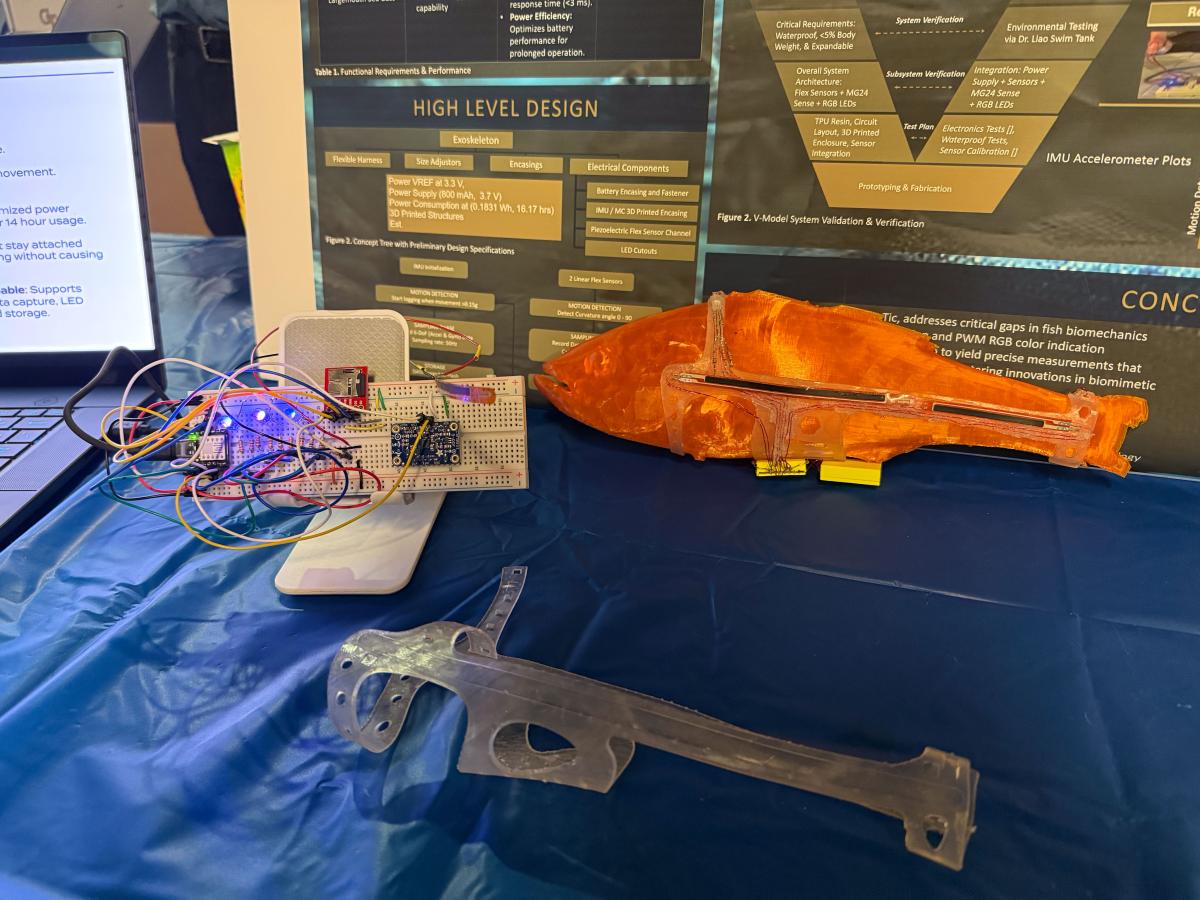
Team ExoTic's lightweight, waterproof, and non-invasive fish exoskeleton enables real-time curvature measurement, data storage, and posture-based visual feedback using RGB LEDs.

Professor Lucas Graber (taking the photo) advised team WiVS. Their sensor for wind turbines self-powers by harvesting energy from the turbine's rotation and transmits data wirelessly, reducing the need for wired or battery power.
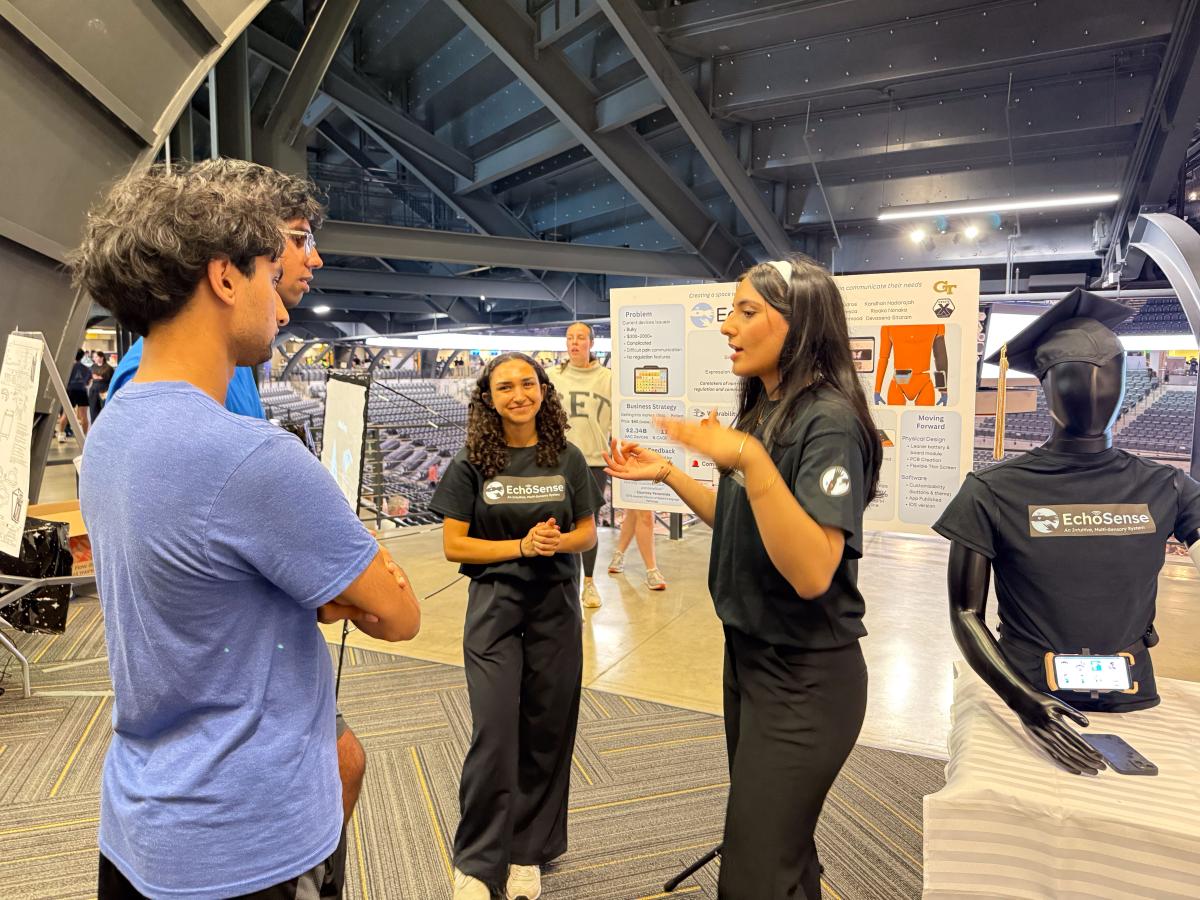
A member of team EchoSense explaining their portable communication and feedback device. The wearable solution allows nonverbal children with autism to communicate their needs.
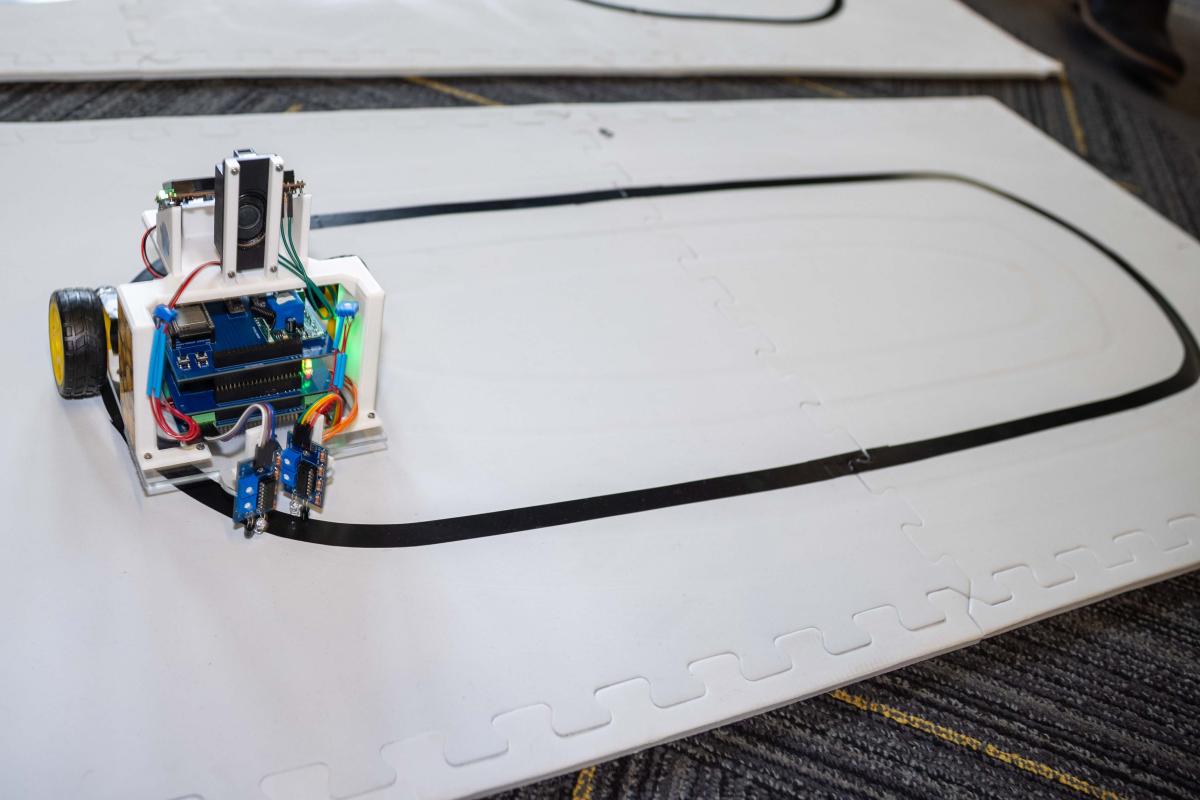
Team Buzz Car created a new framework for the ECE 3011 junior design project. This framework is centered around planning, designing, and manufacturing a line-following car to teach valuable skills and help prepare students for Senior Design.
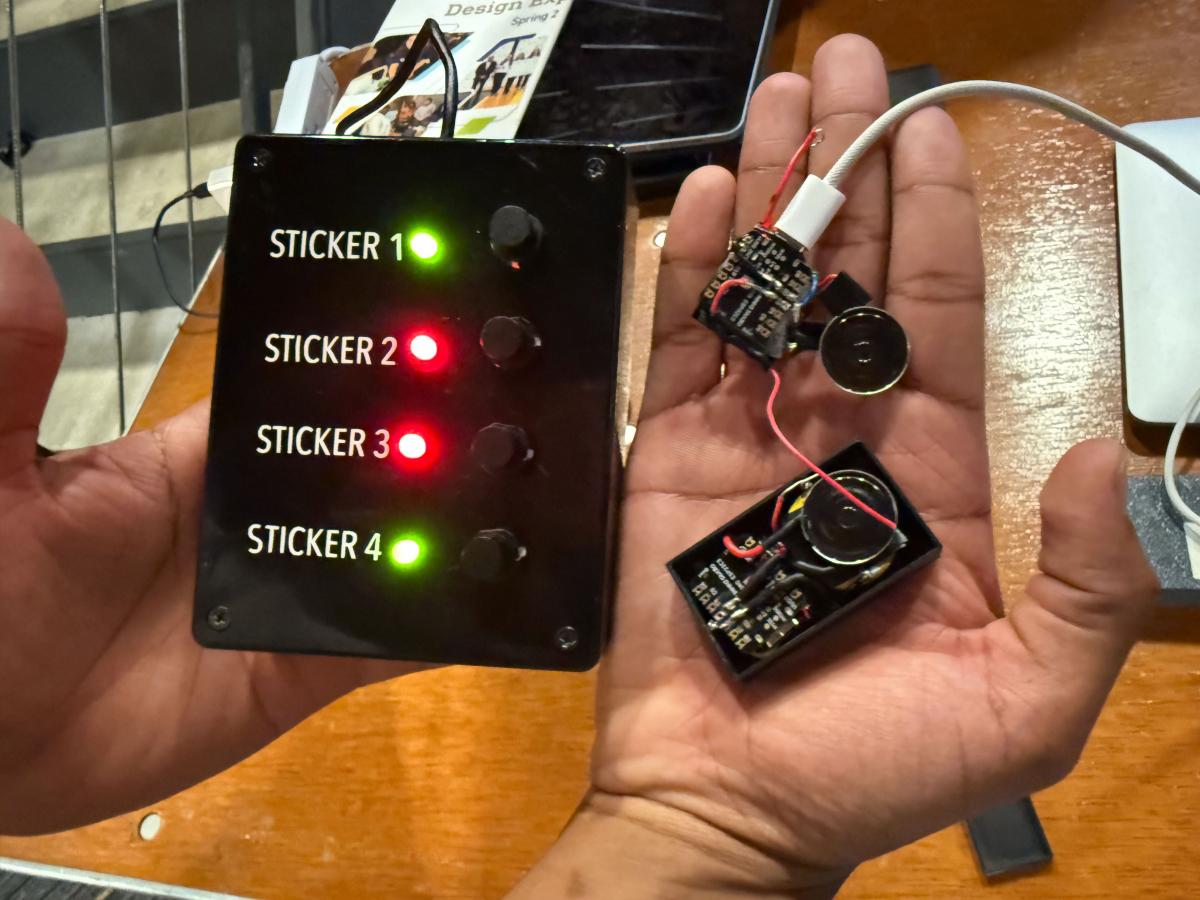
The technology behind Team Finders Keepers embedded system that prompts a noise when searching for lost items. The device is much louder than currently available options.
In total, ECE teams made up 26 of the 238 teams that showcased their semester-long projects. Additionally, many ECE students participated in the 43 interdisciplinary teams at the event.
An impressive range of innovation was exhibited by the teams this year.
Some projects went under water, like a dolphin chat bot designed to enable the marine mammals to influence and interact with their environment, as well as a fish exoskeleton used to measure kinematics and energetics.
Smart systems were also a hot topic, with teams showcasing advanced technology solutions to control and automate homes, greenhouses, keyboards, and even canes.
View photos of the Spring 2025 Capstone Design ECE teams and explore all the winning projects.
(text and background only visible when logged in)
Related Content
Solutions for the Operating Room and CubeSat Navigation Top Spring 2025 Capstone Design Expo
The showcase of senior design projects included projects from a record 238 teams across four colleges.
(text and background only visible when logged in)
ECE Projects at Fall 2024 Senior Capstone Design
ECE seniors will showcase their innovative, real-world solutions tackling a range of problems
(text and background only visible when logged in)

